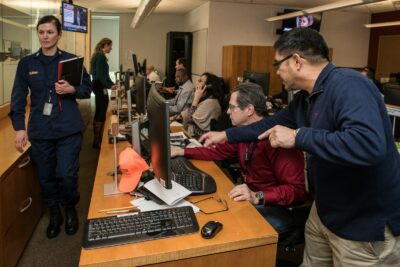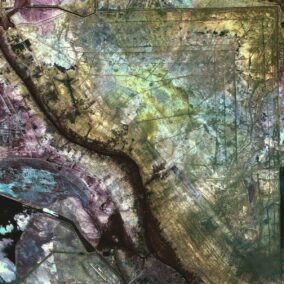Revolutionizing Crisis Management through Technology
Improving Coordination with Disaster Management Software
In the field of emergency response, the integration of disaster management software is transforming the way multi-agency and multi-jurisdictional efforts are coordinated. This advanced software facilitates seamless communication and collaboration, ensuring that all involved parties can respond effectively to crises. For rapidly developing regions like Saudi Arabia and the UAE, particularly in cities such as Riyadh and Dubai, the adoption of such technology is essential for maintaining public safety and resilience.
Disaster management software centralizes critical information, enabling real-time data sharing among different agencies and jurisdictions. This centralized approach ensures that all stakeholders have access to the same up-to-date information, which is crucial for making informed decisions during emergencies. In Riyadh, for instance, the software can help coordinate efforts between municipal authorities, emergency services, and healthcare providers, ensuring a unified and efficient response.
Moreover, the integration of Artificial Intelligence (AI) within disaster management software enhances its predictive capabilities. AI algorithms can analyze vast amounts of data to forecast potential disasters and their impacts, allowing authorities to take preemptive measures. This proactive approach not only mitigates the effects of disasters but also optimizes resource allocation, ensuring that the most critical areas receive immediate attention.
Blockchain Technology: Ensuring Data Integrity and Transparency
The incorporation of Blockchain technology in disaster management software offers significant advantages in terms of data integrity and transparency. Blockchain’s decentralized ledger system ensures that all data related to disaster response is secure and tamper-proof. This reliability is crucial for maintaining trust among different agencies and ensuring that all actions are based on accurate information.
In Dubai, for example, blockchain technology can be used to track the deployment of resources and personnel during a disaster. This transparent system allows all involved parties to verify the data independently, reducing the risk of miscommunication and ensuring a coordinated effort. Additionally, smart contracts enabled by blockchain can automate specific response actions when certain conditions are met, further enhancing the efficiency of emergency operations.
The use of blockchain also fosters international collaboration in disaster management. By providing a secure platform for sharing sensitive information, blockchain facilitates cooperation between different countries and organizations. This global approach is particularly valuable in large-scale disasters that require a coordinated international response, highlighting the importance of technology in modern disaster management.
The Role of Leadership in Implementing Disaster Management Software
Effective leadership is crucial for the successful implementation of disaster management software. Business executives and mid-level managers in Saudi Arabia and the UAE must champion the adoption of these technologies and ensure their integration into existing emergency response frameworks. Their vision and commitment to innovation drive progress in this field, making their regions more resilient to disasters.
Leaders must engage in strategic planning and allocate resources to support the deployment and maintenance of disaster management software. This involves training personnel to use the software effectively and ensuring that all agencies are familiar with its capabilities. In Riyadh and Dubai, where the urban landscape is continually evolving, strong leadership is essential to ensure that disaster management strategies keep pace with technological advancements.
Project management skills are equally important in the deployment of disaster management software. Project managers oversee the logistics of integrating this software into disaster response plans, from initial implementation to ongoing updates and maintenance. Their expertise ensures that the software is always ready to be utilized in the event of a disaster, enhancing the overall preparedness and resilience of the community.
Future Prospects: Enhancing Disaster Response with Advanced Technology
The future of disaster management lies in the continuous advancement of disaster management software. Innovations in AI and blockchain are driving the development of more sophisticated and reliable systems. These advancements will significantly improve the coordination and effectiveness of multi-agency and multi-jurisdictional response efforts, particularly in complex urban environments like Riyadh and Dubai.
Future disaster management software will likely incorporate enhanced AI algorithms that can provide even more accurate real-time data and predictive analytics. These improvements will enable authorities to detect emerging threats more quickly and respond with greater precision. Additionally, the integration of other advanced technologies, such as the Internet of Things (IoT) and the Metaverse, will further enhance the capabilities of disaster management systems.
IoT devices can provide additional data points that improve situational awareness, while the Metaverse offers a unique platform for virtual training and simulation. These technologies combined will create a more robust and comprehensive disaster management framework, ensuring that communities are better prepared to handle emergencies.
Conclusion: Embracing Advanced Software for Effective Disaster Management
The integration of disaster management software is revolutionizing the way emergency responses are coordinated. By leveraging advanced technologies such as AI, blockchain, IoT, and the Metaverse, countries like Saudi Arabia and the UAE are setting new standards in disaster preparedness and response. These innovations ensure that critical information is available in real-time, enabling swift and effective actions that can save lives and minimize damage.
As we continue to advance in this field, the role of leadership and effective project management cannot be overstated. Business executives, mid-level managers, and project leaders must collaborate to ensure the successful implementation and maintenance of disaster management software. Their efforts will not only enhance public safety but also demonstrate the transformative power of modern technology in disaster management.
In conclusion, the future of disaster management is bright, with advanced software at the forefront of this evolution. By prioritizing innovation and collaboration, we can create a safer and more resilient world, where communities are well-prepared to face the challenges posed by natural disasters.
#DisasterManagementSoftware, #EmergencyResponse, #MultiAgencyCoordination, #ArtificialIntelligence, #Blockchain, #Metaverse, #BusinessSuccess, #LeadershipSkills, #ProjectManagement























